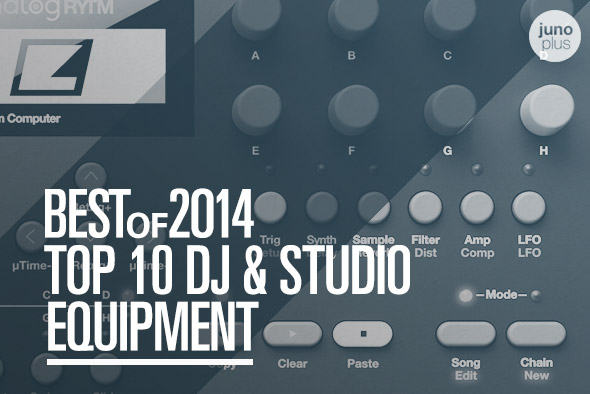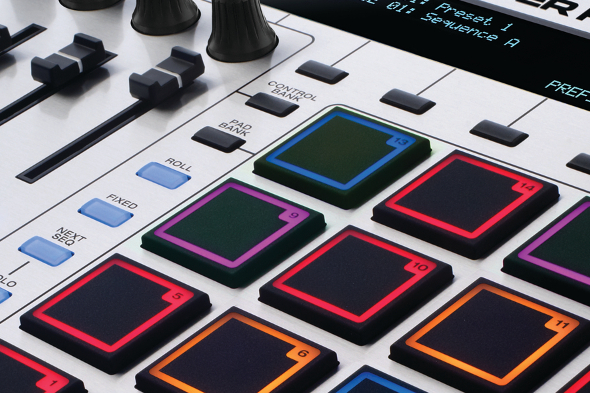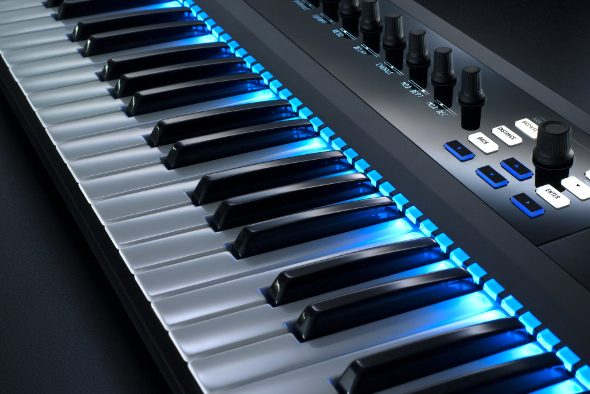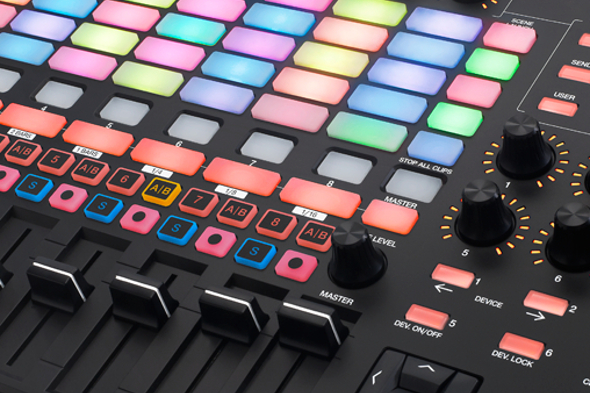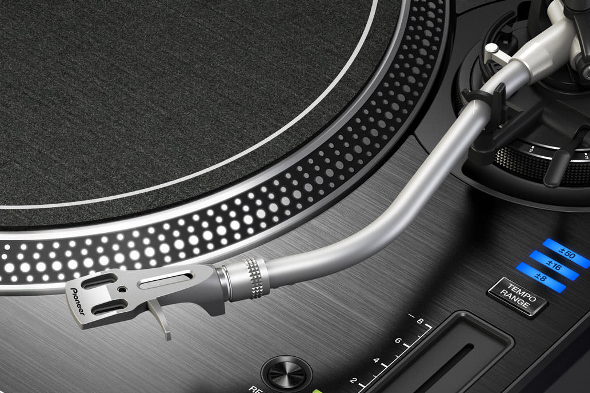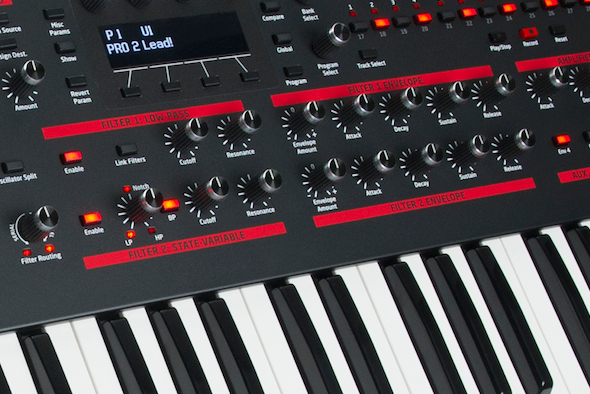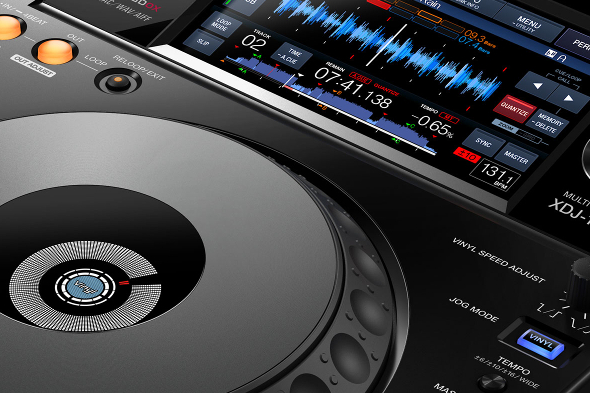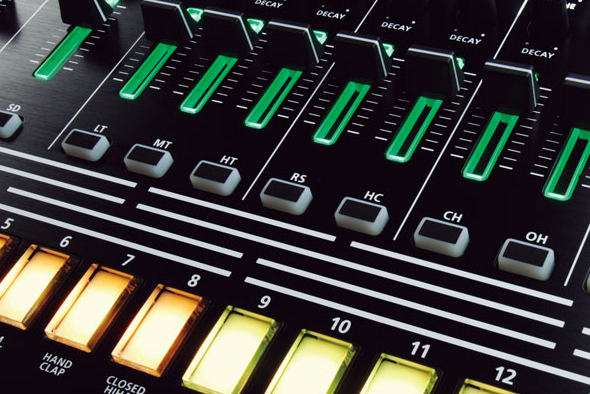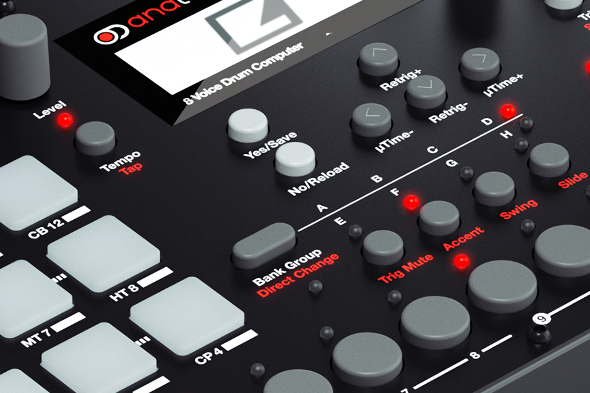Best Of 2014: Top 10 DJ & Studio Equipment
We round up 10 of the best pieces of DJ and studio gear from the year gone by.
It’s difficult to pick out trends in terms of gear aimed at production and DJing, but this year it certainly seemed as if gear is getting less expensive. While this move towards affordability is fully represented in this list, together with the increasing demands of those who like to work without using a laptop screen, we also pay attention to the year’s most innovative products. Perhaps most importantly are the products on this list that do the same job as countless others but better than they’ve done them before. Whatever tools you’re looking for to get creative in the year to come, this list should have everything you could need to get started.
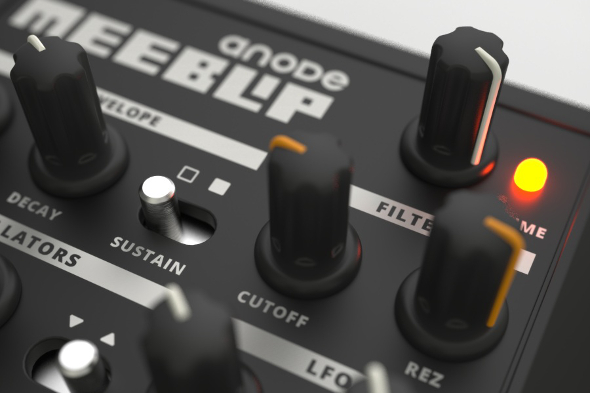
10. Meeblip – Anode
The Meeblip Anode is a diminutive synth designed and created by Create Digital Music’s Peter Kirn and James Grahame of Reflex Audio. Like many other tiny synths of its type, it’s a very basic thing – just two digital oscillators and an analog filter provide the sound along with some modulation, envelope, tuning and pulse width controls, but it’s capable of creating some pretty meaty basslines.
However, the real killer app of the Meeblip – besides its affordability – is its open-source nature. As well as having hardware that can be hacked physically (changing component values to modify the filter for example), it also features a programmer port, allowing the firmware to be modified via a hardware adapter or an Arduino microcontroller.
More info/Buy
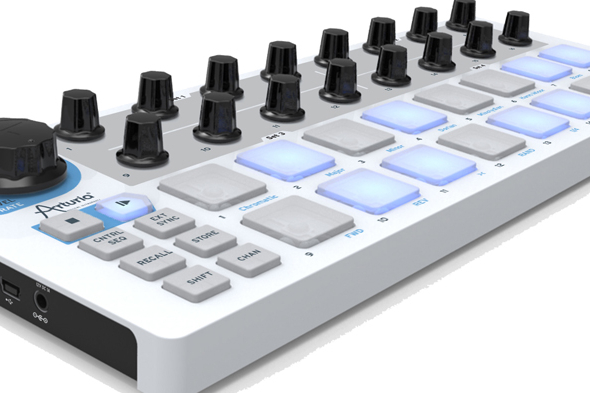
9. Arturia – BeatStep
Arturia is a company already well versed in the creation of software/hardware drum machines, with the popular Spark and SparkLE models proving a popular alternative to the Maschine. The BeatStep continues this tradition, providing a tool with 16 MPC-like rubber pads that can sketch out beats or trigger samples in a DAW, but it does an awful lot more than its diminutive size and sub-£100 price tag would suggest.
What’s really great about this tiny, portable unit is its step sequencer ability. As well as featuring a USB socket, the BeatStep comes with MIDI and CV/Gate outputs and can be used on its own or with a computer or iPad. With analog synthesisers becoming smaller and more affordable, there will be a lot of people out there without the means to coordinate them without using a DAW; the BeatStep’s 16-step analog sequencer offers an intuitive solution to those who want to make music without having to be glued to a screen.
More info/Buy
8. M-Audio – Trigger Finger Pro
M-Audio’s Trigger Finger controller was definitely looking a little long in the tooth earlier this year. With the competition moving on to controllers with backlit pads and LCD screens, the all-grey look of the Trigger Finger was in desperate need of an upgrade, and the Trigger Finger Pro did just that. Offering a set of backlit pads, faders and LCD feedback with a brushed aluminium faceplate complemented by a great range of bundled software, it now offers a credible rival to Native Instruments’ Maschine, and one that comes at less than half the price.
While the software control capabilities of the Trigger Finger Pro it’s the standalone sequencer that makes it such an enticing proposition. If you have a collection of hardware synths and drum machines then it’s possible to make the Trigger Finger Pro the brain of your setup without needing to connect it to your laptop. Furthermore, each pad can hold 64 steps, arranged in four blocks of 16 steps, making it more expansive than Arturia’s Beatstep, also featured on this list. Are hybrid standalone hardware sequencer/software controllers the next big thing in the world of MIDI controllers? If the M-Audio Trigger Finger Pro are to a sign of things to come, then quite possibly.
More info/Buy
7. Native Instruments – Komplete Kontrol S Series
There’s a reason why Native Instruments’ Komplete package of soft synths is now on its tenth iteration – it’s the most comprehensive set of software tools any producer can buy. However, since the company discontinued its Kore unit, Komplete has been without a hub with which to browse Komplete’s vast library, leaving the task instead to the Maschine hardware. While it’s a solid replacement, the Maschine’s focus as a beat tool may not make it the ideal Komplete nerve centre for all producers.
Enter the the Kontrol S series, which saw Native Instruments return to the concept of Kore, but improving on it in every way. The masterstroke was Komplete Kontrol, a piece of software allowing the user to browse every Komplete plug-in from one central location; together with NI’s beautifully designed Kontrol S keyboards, they allow swift and easy browsing and control of all software parameters, while keyboard itself feels of a professional quality. The real talking point however was the “light guide”, an innovative LED feature helping novices to find the right keys in whichever scale is selected. Far from dumbing things down, it’s the thing likely to inspire even more creativity than Native Instruments’ vast range already has.
More info/Buy
6. Akai – APC40 MkII
Last year Ableton released the Push controller, arguably the best example of a piece of hardware being designed to work in tandem with software since Native Instruments’s Maschine. It left Akai’s APC40 controller – the first designed specifically for Ableton – looking somewhat obsolete, providing a much more easily transported controller with a great deal more performance functionality. The fact it was co-designed with Akai only seemed to hammer the nails in the APC40’s coffin further.
Not only did Akai prove us wrong in the regard, releasing three updated controllers for Ableton Live, they were just as beautiful and exquisitely built as the Push. The affordable APC Mini knocked the Novation Launchpad off its perch as most affordable compact controller for Ableton Live and the APC Key 25 added a keyboard, but it was the APC40mkII that really impressed. Though it lacked velocity-sensitive pads, it shed several pounds from its predecessor’s bulky frame and offering a welcome revision to the button and knob layout. If you want a controller for Ableton Live but want something more traditional than the Push, these three controllers are the best you can get.
More info/Buy
5. Pioneer – PLX-1000 turntable
Technics may still live on as a brand (a digital download store under the name will open early next year), but the absence of the SL-1200 turntable is still felt by those who have to use a unit with knackered pitch control in clubs across the world. Nobody expected that the company to offer the best replacement for the SL-1200 would be Pioneer, whose approach since it started to build its DJ business has been to push innovation in the world of digital DJing.
Given Pioneer’s love of the kind of performance features that make you feel like you have superhuman abilities, the PLX-1000 turntable is surprisingly basic. No USB connection, no Rekordbox functionality – just a turntable that plays vinyl records. That’s really all vinyl DJs need, and Pioneer’s recognition of that is surprisingly canny. The PLX-1000 turntable looks and feels very close to the SL-1200, albeit with removable cables and quicker start and stop times. Considering the legacy the Technics model has, there’s no greater recommendation than that if you don’t want to source a set of turntables second-hand.
More info/Buy
4. Dave Smith – DSI Pro 2 Monosynth
When it comes to analog synthesizers, Dave Smith Instruments are pretty much untouchable. While everyone else has spent the last few years trying to make analog technology, DSI have gone in the opposite direction, putting out the kind of high-end gear that that might be expensive, but is never anything less than the best, and the DSI Pro 2 is no different. While last year’s Prophet 12 saw the company set out to make their best polyphonic synth yet, the DSI Pro 2 was touted as the “ultimate mono synth”, and it more than lived up to that description.
As you’d expect from Dave Smith Instruments, the synth is as fully-featured as it gets; it’s 4-voice paraphonic, meaning it can play four notes at the same time, comes with a multi-track step sequencer, and multi-mode arpeggiator. perhaps the best feature of the Pro 2 are the “superwaves” – basically several waves stacked on top of each other like the classic Roland function of the same name. Up to three can be added to each of the oscillators at a time, and the ability to create full-bodied, morphing sounds surpasses even the Prophet 12. The DSI Pro 2 is much more versatile than its description as a monosynth suggests, and at £700 less than the Prophet 12, offers the chance to own some Dave Smith hardware without having to compromise.
More info/Buy
3. Pioneer – XDJ-1000
The writing’s been on the wall for CD technology for years now, with everything from the hi-fi to the home computer ditching optical drives. This year the Pioneer CDJ finally followed suit, with the commpany releasing the USB-only XDJ-1000 media player. Though some might question the wisdom of doing so when Pioneer already make a large number of DJ controllers aimed at laptop users, not everyone wants to take a laptop to a club, and the jog wheels on DJ controllers just aren’t at satisfying to use.
The XDJ-1000 does everything a high-end CDJ does, built to the same high standard, but for nearly half the price. It features full-size jog wheels, a full-colour touch screen and includes features like auto loop, hot cues, slip mode, quantize and beat sync. The XDJ-1000 may not be wildly innovative, but those wishing to own a pair of high-end CDJs in order to practice their sets for the club were severely hampered. The price point of the XDJ-1000 may not be perfect, but it still makes owning a home setup with club-ready technology much more realistic than it once was.
More info/Buy
2. Roland – Aira System
If we could give an award for teased-out marketing campaign of the year, it would go to Roland; over several weeks it revealed the Aira line, suggesting that it was going to revive classic equipment like the TR-808 drum machine and TB-303 Bassline. Though the reality – analog modelling rather than the real deal – was slightly different, they did provide a surprisingly affordable range of kit, providing a way for budding producers to get away from soft synths and sequencers for just over £1000 if you chose to buy the whole system, which included the TR-8 Rhythm Performer, TB-3 Touch Bassline and SYSTEM-1 Plug Out synthesiser and VT-3 Voice Transformer.
You can certainly get better sound and functionality from other products on the market – the TB-3 is limited by its presets for example – but there were few products as affordable that were quite as fun to use as Roland’s Aira products. This was perhaps the most important thing Roland brought to the table this year; just as Korg did with the diminutive Volca series last year, the Aira line offered an affordable way for beginners and experts alike to stretch their creativity without having to get bogged down in overly complicated menus.
More info/Buy
1. Elektron – Analog Rytm
Slowly but surely, Elektron have turned into one of the most interesting gear manufacturers in the business. The Octatrack sampler, and Analog Four synthesiser have all provided some of the most well-built production tools on the market over the past few years, but the Analog Rytm drum machine might be their finest hour – no small feat considering the Machinedrum has been consistently popular since 2001.
The Analog Rytm is another drum machine, but the first from the company offering an analog engine. Combined with Elektron’s brilliant step sequencer, the ability to upload user samples, velocity sensitive, backlit drum pads and versatile voice architecture, the Analog Rytm is one of the best contemporary analog drum machines on the market. Elektron hardware is difficult to learn, and certainly not cheap, but those willing to invest both time and money in the Analog Rytm will find one of the year’s most enjoyable pieces of hardware.
More info/Buy
